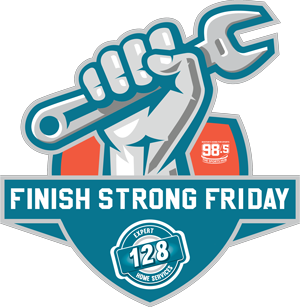
The advantages of small, high velocity mini ducts are many, particularly in areas like Weston, MA, where houses might be hundreds of years old and full of historic detailing. A small, high velocity mini duct system addresses many of the issues that plague traditional HVAC systems, giving homeowners an option that has many advantages, such as more energy-efficient, less obtrusive, and provides exceptional air quality.
What Is a High Velocity Mini Duct System?
A high velocity mini duct system hooks into an existing central HVAC system, working in tandem with an air handler to reduce humidity. After the air handler is hooked up, the small mini ducts are installed throughout the home. The smaller interior duct space creates a faster airflow. These high velocity systems can also be installed as an entirely new HVAC option. Discuss the options with a 128 Plumbing technician and find out if a high velocity unit will work in your home. Here are just a few of the benefits and advantages of choosing small, high velocity heating and air conditioning mini duct systems.
Benefits and Advantages of a High Velocity System
There are many reasons why a Weston homeowner might choose to upgrade to a high velocity system that uses small mini ducts to push conditioned air throughout the space. Lower usage costs, less obtrusive appearance, lower decibel levels, better air quality, and several other benefits and advantages make a high velocity system with mini ducts a top contender when installing or replacing an HVAC system.
1. Lower Usage Costs
Homeowners might hesitate at first when looking at the cost of the unit and installation of a high velocity system and small, mini ducts. A high velocity mini duct unit is substantially more expensive to buy than a standard central A/C unit, and the small ductwork install is typically higher priced than traditional ductwork.
However, the average cost to run a high velocity system with small ducts is substantially lower, which can add up to big benefits and savings on monthly utility bills. According to a recent ENERGY STAR publication, up to 20% of conditioned air might escape from traditional ducts, but a high velocity system with mini ducts might have air loss of 5% or less, a distinct advantage. A 25% savings on the usage cost means that a high velocity system will eventually pay for itself in lowered utility bills. To get the maximum savings and avoid leaks, be sure to schedule a professional installation with a reputable contractor. 128 Plumbing technicians have experience working with Weston homes.
2. Appearance Matters
The look of a high velocity system is one of its many advantages for homeowners. In historic homes, installing ductwork might disturb tray ceilings or decorative moldings, but the small ducts from a high velocity system are barely noticeable. They take up much less space than radiators or standard vents and don’t take away cubic space, making a high velocity system a smart solution that delivers plenty of cool or hot air. In historic homes, it’s particularly important to consider a high velocity option that won’t disturb interior details. Some homes are even protected, forcing homeowners to choose small systems with a minimal visible footprint.
3. Improved Air Quality
One of the other advantages and benefits of this high powered system with more air velocity is better air quality. Because the air has more velocity and power when moving through the mini ducts, it carries away dust and debris, preventing it from building up. In traditional ducts with lower velocity, dust can settle in the ducts and blow out into every room with a vent. The velocity in a traditional system is approximately 5-600 feet per minute. A high velocity unit delivers around 1,500 feet per minute, even with mini vents.
4. Quiet to Run
Noise pollution is a major issue with some small units, particularly window units. Large, low velocity central units can also be fairly noisy, but a small, high velocity unit is typically quiet, another of its many advantages. The mini ducts are individually insulated to reduce noise. There’s no need to turn the volume up on the TV when the high velocity unit is running and pushing air through a small duct system.
5. Quick to Cool or Heat
Air moves at high velocity through the small ducts in a mini duct system, creating constant air movement. The quick movement of the air helps cool off large and small spaces rapidly. Some users even recommend leaving the thermostat a little higher when using a high velocity system because a higher temperature often feels cooler when combined with the air movement. Essentially, it feels like running an air conditioner and a fan at the same time. Talk to a 128 Plumbing HVAC expert to determine what type and size unit would work best in your home.
6. Easy to install
Of all of the central air conditioning and heating options out there, high velocity mini ducts are some of the easiest to install, adding to its many advantages. Instead of building large ducts throughout the house, a high velocity system requires drilling small holes in the walls and installing small pipes behind the wall. The ducts in a high velocity system tend to be just a few inches in diameter, though each room may require several small openings to achieve rapid heating and cooling. 128 Plumbing professionals can help find out-of-the-way duct locations that create minimal disruption in each room.
7. Low Cost to Maintain
Another of the advantages or benefits to systems with high velocity is inexpensive maintenance. With extensive ducts, any maintenance issue can be an expensive proposition. Contractors might need to cut out large sections of the wall to access a recessed duct or create small, localized holes in areas where the ducts are more accessible. A replacement part often means a big bill. With a small, high velocity system, maintenance and repair costs are much lower. Since ducts are entirely hidden, there’s no need to cut into the wall when replacing the malfunctioning duct. 128 Plumbing offers both maintenance and installation on high velocity and traditional heating and cooling systems.
Is Your Weston Home a Good Candidate for High Velocity?
While the obvious advantages of a high velocity duct system might make it seem like every house is ready to downsize the ducts for a small alternative, the cost is often the deciding factor. In homes with an existing duct system, switching to a mini, high velocity option might be too expensive and require a major remodel. Tearing out the existing ducts might recover some square footage, but it also means a lot of man hours to repair the damage.
The best candidates for a small, high velocity system are often newly built homes or houses with no existing central cooling. For new construction, be sure to discuss the options with the builder and get a final home design that is planned around a high velocity unit and small ducts.
For homes without air conditioning that need a retrofit or if you’re planning a rehab, contact 128 plumbing to see what’s available. Experienced technicians can run all of the calculations to see what systems would work best in your Weston home.


